Instagram is filled to the brim with yogis doing incredible photos in incredible places. Want to channel your inner instayogi and get that gorgeous yogagram shot? Then these poses are for you. But even if you're not a instayogi, these five stunning poses can help deepen your sadhana, and help you find strength and beauty in your self.
You may know Stephanie Morgan from her yoga and lifestyle blog, xostephmorgan, or maybe from her Instagram, Facebook or Twitter, which are filled to the brim with stunning asana photos. Maybe, you've been one of her students in her yoga classes, or you're just learning about her through this article.
Stephanie is a yoga instructor and lifestyle blogger from Chicago. Yoga has impacted her life in so many ways, and she loves having the opportunity to teach and share her practice with others. She hopes to encourage and inspire other people to follow their dreams and find new levels of possibility in their minds and bodies, by bringing their practice off their mat and into their lives.
However, you've come to know Stephanie, we at Yogapedia have been enamoured with her visual yoga journey, and wanted to share a part of it with you, in hopes that the lessons Stephanie has learned through her yoga path will inspire you on your own. So we asked Stephanie what her favourite yoga poses are.
Here are Stephanie Morgan's top 5 favourite asanas, what each pose has taught her, and her advice to help you master these poses yourself, written by Stephanie herself:
Handstand (Adho Mukha Vrksasana)
Handstand is by far my favorite posture – but it is also the most difficult for me. I have been working on my handstand for quite some time now, and still struggle to reach the full expression without use of a wall or prop. However, I made it one of my goals for this year to hold a forearm handstand on my own without any wall support. After months and months and months of practice, falling down, frustration and perseverance, I am finally able to hold this posture on my own! It’s a testament to why I love yoga so much. There’s a quote that says, “Yoga is not about touching your toes, it’s about what you learn on the way down”. For me, this pose has taught me a lot about being humble, strong, and how important it is to laugh at yourself every now and again. My next goal is to be able to hold full expression on my hands without assistance.
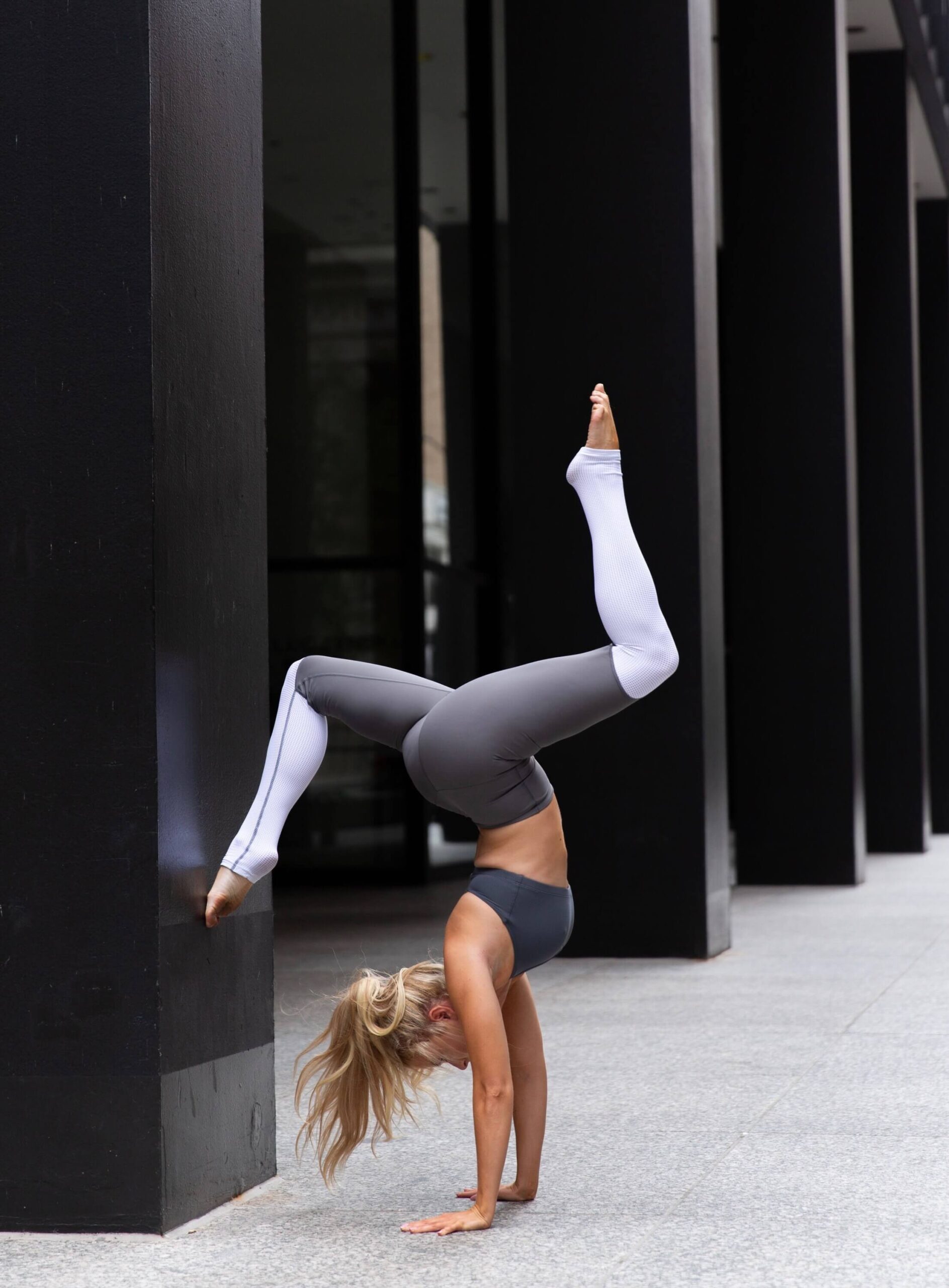
My biggest piece of advice for a yogi wanting to learn a handstand is to practice regularly, and not to get too attached to using a wall or prop. I definitely used the wall as a crutch for too long, and initially became afraid to try without it. Handstands are as much of a mental challenge as they are physical. I had an instructor teach me how to fall without hurting myself, by tucking my chin to my chest and lightly rolling out of the posture. It helped me so much and took the fear out of falling. Also, make sure your core is tight during the entire posture – handstands require a lot of abdominal strength, and you can easily change the pressure to be on your spine with incorrect alignment.
Dancer's Pose (Natarajasana)
Dancer's pose is one of those poses I can’t get enough of. It took me a very long time to get to the point I’m currently at, and I am still working to get the full expression of “King Dancer's Pose”. This pose is not only beautiful, but it strengthens so many muscle groups, improves balance, and really stretches the hamstrings.
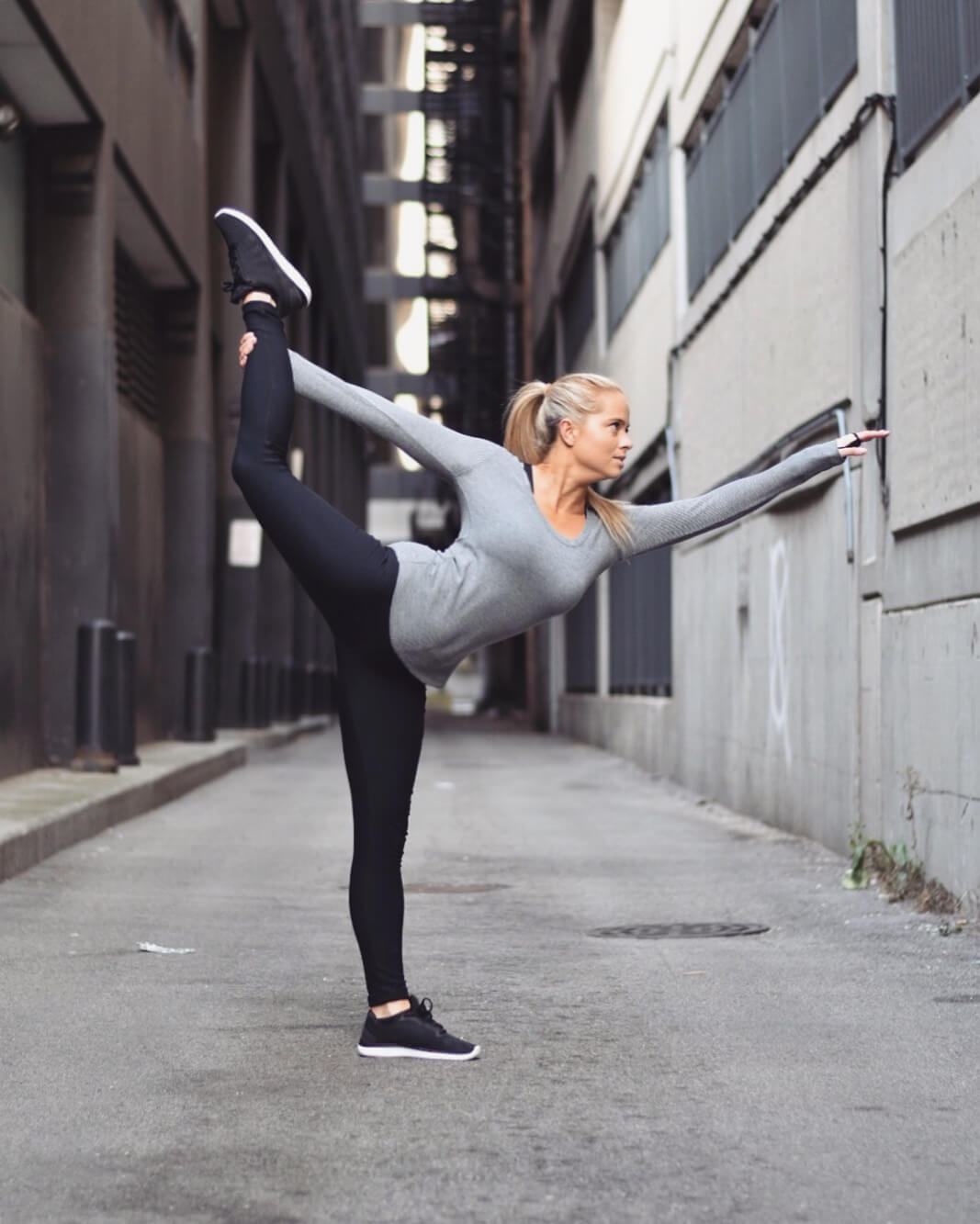
I remember when I first began practicing yoga, this pose was extremely challenging for me. I couldn’t hold my balance for more than a few seconds, and I could barely see my foot over my head. Over the years, I’ve learned the importance of using my “Drishti” or gazing point, to help maintain my balance. If you gaze to the floor, your body will naturally move towards where you look. If you keep your gazing point elevated, it will help your coordination, and allow you to stay upright. I also recommend moving slowly and using your breath to help loosen tightness in your muscles. Don’t be afraid to use a strap or wall support to build your strength when first starting to learn this pose!
Side Plank (Vasisthasana)
If there is one pose that can work the entire body, its side plank! Visually, it can be such an inspiring pose, but physically it’s extremely challenging (especially when held for long periods of time). There is a lot of balance required, as well as ab strength, shoulder and arm strength, not to mention, outer thigh, calf, and hamstring strength. This pose resonates with me because it’s a very powerful posture, and it has a wide range of benefits. It targets muscles on the side of the body that tend to be neglected by regular exercises, such as running and walking.
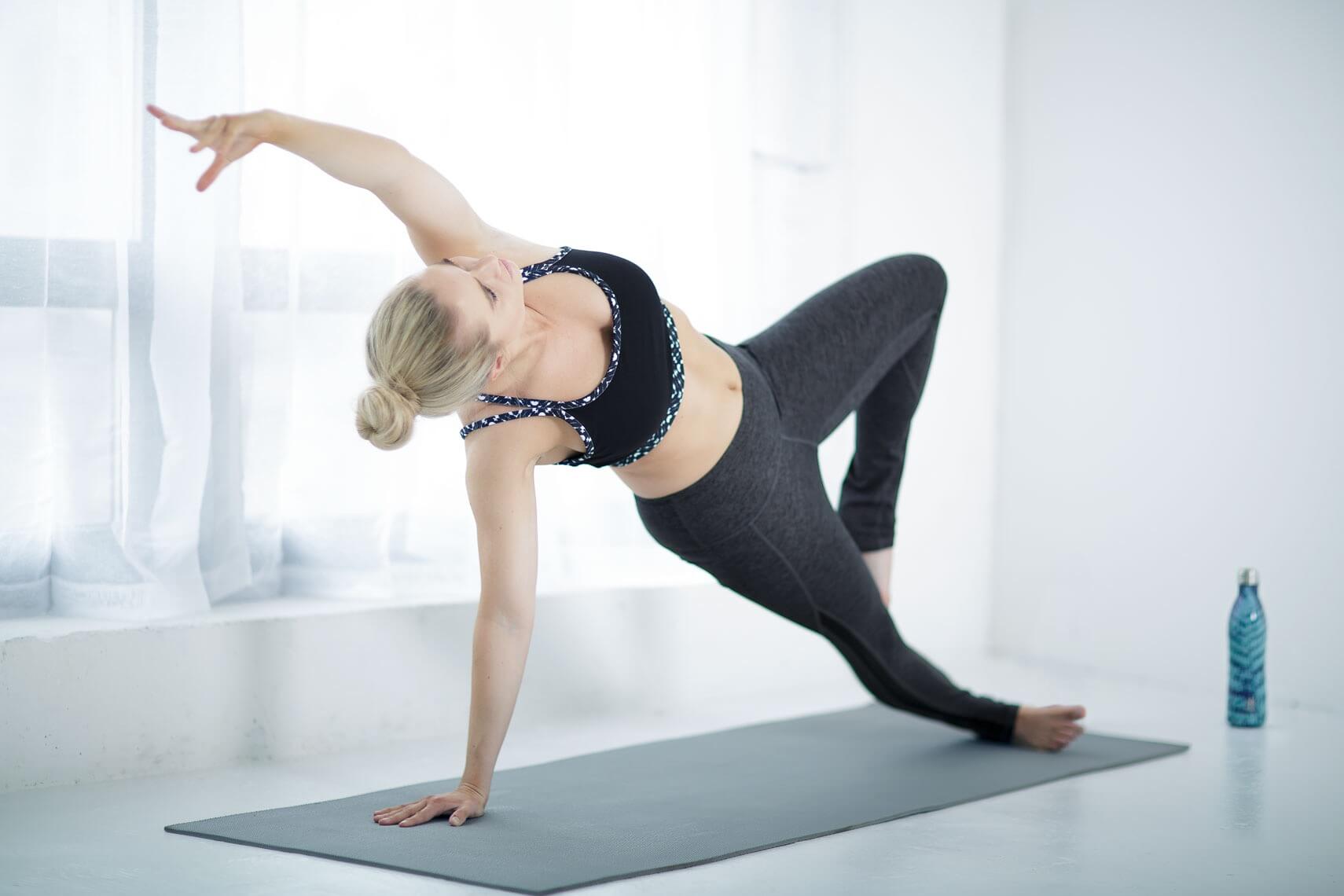
One thing I love about side plank is the amount of variations you can take to make it more difficult. Holding the regular version is already hard, but lifting one leg and changing your gazing point can make a big difference. Currently, I’m working on one-legged side plank (eka pada vasisthasana), where you extend one leg to be perpendicular to the ground. I’m still working to reach the full expression, as it requires a lot of hamstring flexibility and balance/coordination.
Tree Pose (Vrksasana)
While this may seem like an easy pose at first, there are many variations you can take in this pose to make it more challenging. Not only is it a great way to improve balance, but it also helps open your hips and knees, improves ankle strength, can lower your blood pressure, and can lengthen the spine. I really enjoy closing my eyes in this posture – you never realize how much your gazing point helps you maintain your balance until you no longer have it. This pose resonates with me because it is a reminder to root down and come back to the basic part of yoga – foundation. It’s a very grounding posture and is great for bringing down your heart rate after a difficult vinyasa flow.
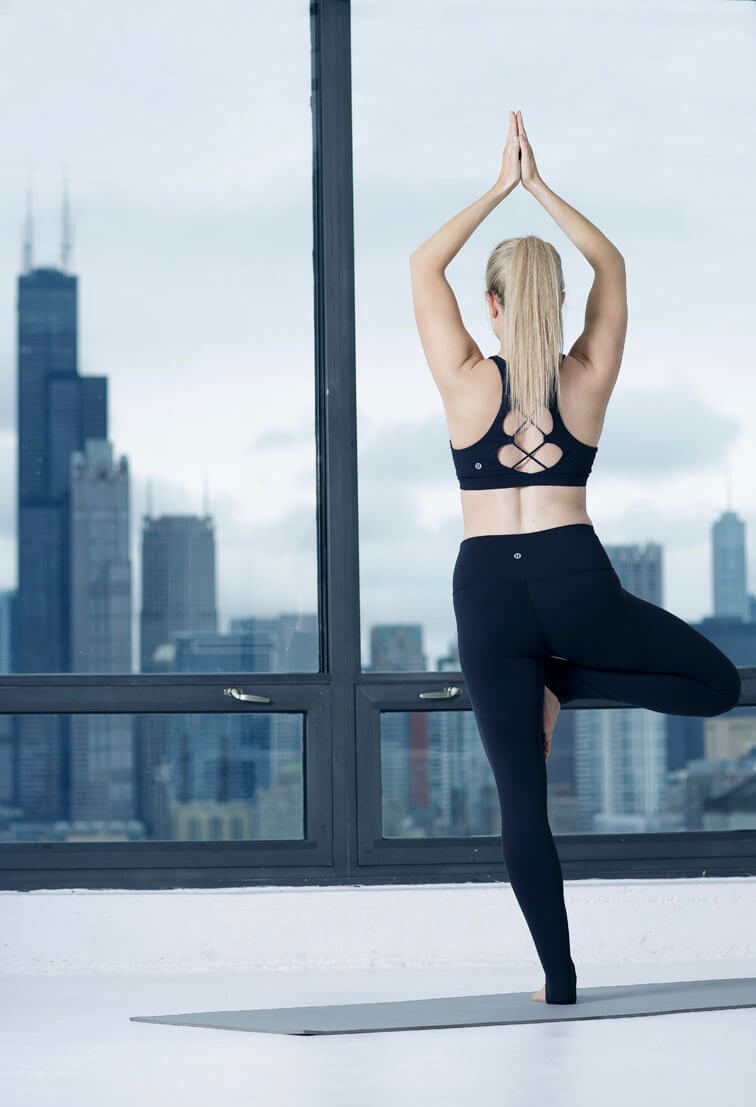
Wheel Pose (Chakrasana)
Last but not least, wheel pose! This pose is so beautiful and is a wonderful spine strengthener/back opener. I am naturally inclined to hunch over when sitting at a desk or table, and this pose really helps counteract that frontal rounding in my spine. This posture helps strengthen the chest, lungs, arms and wrists, legs, abdomen, and spine!
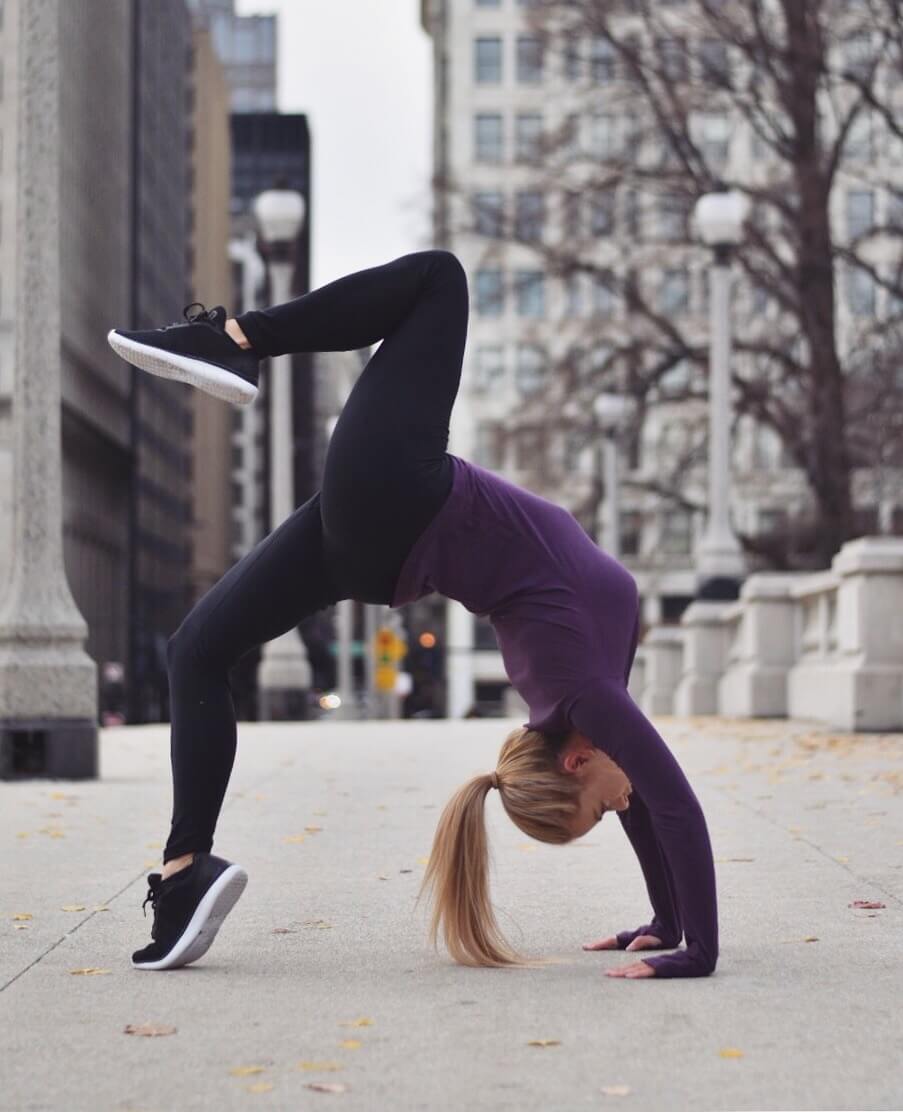
When I first started practicing yoga, I was drawn to the beautiful images I saw of people doing wheel pose. I love the variations you can take in this pose such as one-legged wheel (eka pada urdhva dhanurasana), which is pictured here, straight leg wheel, or even forearm wheel. There are so many ways to modify this posture, so it makes it fun to challenge yourself. A word of caution – always practice safely, have patience, and listen to your body. Never push yourself beyond your own limits. Have fun trying out these variations—you just might be amazed by the amount of strength and flexibility these few variations can bring to your overall yoga practice.
Photo credits: Shanti Knight, Omar Organista, and Shawn Kinney
During These Times of Stress and Uncertainty Your Doshas May Be Unbalanced.
To help you bring attention to your doshas and to identify what your predominant dosha is, we created the following quiz.
Try not to stress over every question, but simply answer based off your intuition. After all, you know yourself better than anyone else.